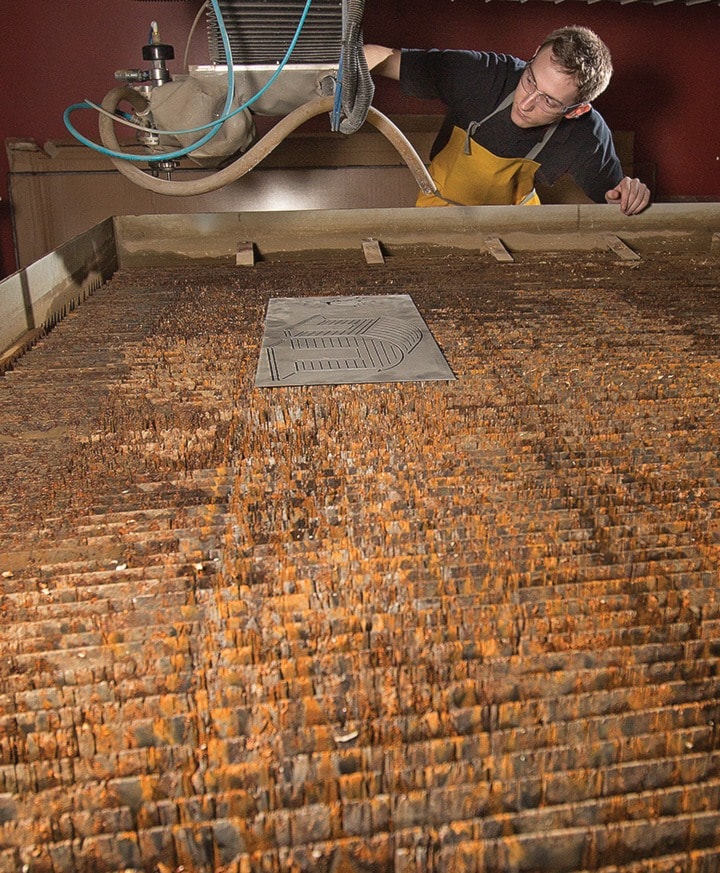Technological innovation can happen anywhere.
In a high-tech research facility, a dark basement, a school classroom, or a sprawling workshop at Camosun College, where students scurry back and forth carefully examining prototypes, designs and equipment on work tables teeming with a sea of gadgetry. The college’s director of applied research innovation Tim Walzak, says those very students are the building blocks of Victoria’s future tech industry.
“Historically the perception and view of the college system and Camosun is that we are a training facility,” he said. “I like to see us as catalysts for growth, both on the training side with access to the tech side, to providing solutions.”
Many of those solutions are born from high-tech equipment including state of the art 3D printers, a water jet cutter, a five-axis computer numerical control mill and thousands of square feet of work space, most of which was made possibly by federal grants to the tune of $6 million during the past three years.
The Camosun facility, coupled with the school’s model, looks past the patents and licensing of technology in favour of focusing on hands-on problem solving and the infrastructure it values most – students.
“Our success measure is a successful company hiring our grads,” Walzak said. “That is our success. That is our No. 1 measure.”
The plan to that end is a simple one, predicated on collaborations with local partners in the tech industry. Students have designed compact water treatment plants, and collaborated with Ocean Networks Canada to improve tsunami sensor gear for the deep ocean.
Students work on fundamentals such as prototyping and design for a fraction off the cost of farming out the work elsewhere, such as specialized protective cases for electronic tablets and parts for chip makers for a local restaurant.
“This is a continuum between basic research and development and the marketplace.
“What Camosun is particular good at is the problem-solving end of the spectrum. What universities are good at and are famous for is the basic research,” Walzak said. “We need to have an equally productive innovation end to the spectrum, putting this ideas into practice between basic research and the market place.”
Walzak distinguishes the technology innovations at the college from work done at the University of Victoria where he ran the technology transfer for almost a decade. He said Camosun’s students complement UVic’s tremendous research capacity, as opposed to competing head to head.
“We are finding companies are coming to our doorsteps and asking, ‘how do we become involved?’” Walzak said.
That knocking has come to the doorstep of students like 22-year-old Josh Cockcroft, a mechanical engineering student at Interurban since September who was disgruntled with a program he was enrolled in elsewhere.
“The great thing is (Victoria’s tech sector) is growing exponentially. The tech sector is very advanced,” Cockcroft said. “As you can see by our machines we are not playing around. We are going straight for the higher technologies.”
Cockcroft is developing a new tablet case for Reach Technologies where he was charged with much of the modelling. The prototype has been completed and printed in one of the college’s 3D printers, and is now heading to Europe to be shown off in a trade show. The prototype went from Victoria company, to Victoria students, on to international audiences – a cycle Cockcroft hopes to continue.
“I am at a point in my life (where) I am looking at my career opportunities,” he said. “I love it here. If I could - I would stay here.”
With that same cycle in mind, Wolzak said beyond the high-tech equipment, it is seeing young people like Cockcroft getting a leg up on a career that is most important.
“There are a whole bunch of metrics we have to report back on,” Walzak said. “The most important one is student success. Getting them engaged, getting their passion united and getting them jobs.”
